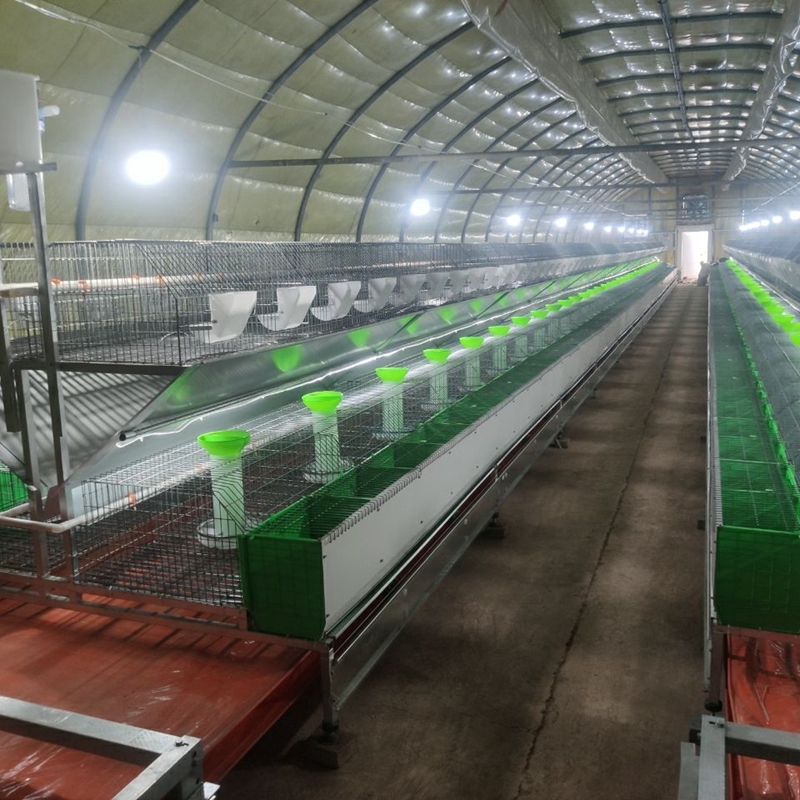Innovative Solutions for Raising Healthy Birds in Poultry Cages
Aug . 19, 2024 01:12 Back to list
Innovative Solutions for Raising Healthy Birds in Poultry Cages
The Evolution of Poultry Cages Ensuring Efficiency and Animal Welfare
Poultry farming has undergone significant advancements over the years, particularly in the realm of housing systems. Among these systems, poultry cages have remained a focal point of discussion regarding their design, efficiency, and the ethical implications of their use. As the global demand for poultry products continues to rise, understanding the evolution of poultry cages becomes essential for both producers and consumers alike.
Historically, poultry was often raised in open environments, which allowed for natural behaviors but posed numerous challenges, including predation, disease management, and inefficient use of space. The introduction of cages revolutionized poultry farming by addressing these concerns, providing a controlled environment that optimizes space and efficiency. Battery cages, one of the most common types, allow for high-density housing where hens can be kept in close quarters, often resulting in higher production rates and lower costs. However, this method has faced significant criticism due to its impact on animal welfare.
As public awareness of animal welfare issues increased, so did the scrutiny of battery cages. These cages typically limit natural behaviors such as nesting, perching, and foraging, raising ethical questions about the well-being of the animals. In response to public outcry and legislation in various regions, producers began transitioning to enriched cages. These provide slightly more space and additional features like perches and nesting areas, enabling hens to express some natural behaviors while still benefiting from the efficiency of cage systems.
poultry cages

The concept of free-range and pasture-raised systems has also gained popularity as consumers demand more humane options. These systems allow birds to roam outdoors, access fresh air, and engage in natural behaviors. While this approach is often viewed as the gold standard in poultry welfare, it presents challenges in terms of space requirements, biosecurity, and overall production efficiency. Producers must balance animal welfare with economic viability, making informed choices about housing systems based on their specific circumstances and market demands.
Technological advancements have played a crucial role in shaping the future of poultry cages
. Innovations such as automated feeding, climate control, and waste management systems enhance not only productivity but also animal welfare by providing a healthier living environment. Smart technologies allow farmers to monitor the well-being of their flocks in real-time, ensuring that any issues can be addressed promptly.Sustainability is another critical aspect influencing the design of poultry cages. As the global population continues to grow, the poultry industry faces the challenge of producing more food with fewer resources. Integrating sustainable practices into poultry farming—such as using eco-friendly materials, optimizing feed efficiency, and minimizing waste—will be essential for the industry's long-term viability.
In conclusion, the evolution of poultry cages reflects a complex interplay between efficiency, animal welfare, public sentiment, and sustainability. While traditional battery cages offered increased production, the shift towards enriched cages and alternative housing systems illustrates a growing recognition of the importance of animal welfare. As technology continues to advance and consumer preferences evolve, the poultry industry will need to adapt, ensuring that the future of poultry farming is not only productive but also ethical and sustainable. By fostering a balance between these elements, we can create a poultry industry that meets the demands of the present while being mindful of its impact on animals and the environment.
-
Hot Sale 24 & 18 Door Rabbit Cages - Premium Breeding Solutions
NewsJul.25,2025
-
Automatic Feeding Line System Pan Feeder Nipple Drinker - Anping County Yize Metal Products Co., Ltd.
NewsJul.21,2025
-
Automatic Feeding Line System Pan Feeder Nipple Drinker - Anping County Yize Metal Products Co., Ltd.
NewsJul.21,2025
-
Automatic Feeding Line System - Anping Yize | Precision & Nipple
NewsJul.21,2025
-
Automatic Feeding Line System - Anping Yize | Precision & Nipple
NewsJul.21,2025
-
Automatic Feeding Line System-Anping County Yize Metal Products Co., Ltd.|Efficient Feed Distribution&Customized Animal Farming Solutions
NewsJul.21,2025






